Simulation Analysis of Fluid-Structure Interaction of High Velocity Environment Influence on Aircraft Wing Materials under Different Mach Numbers
Abstract
1. Introduction
2. Basic Theory
2.1. Fluid Solid Coupling Equation
2.1.1. Fluid Equations
2.1.2. Solid Equations
2.1.3. FSI Equations
2.2. Modal Analysis Equation Under Pre-Stress
3. Numerical Simulation of Wing Flow Field
3.1. Condition Description and Model Establishment
3.2. Model Simulation and Analysis
4. Numerical Analysis of Wing Structure
4.1. Establishment of Finite Element Model Structure
4.2. Stress Analysis
4.3. Modal Analysis
5. Discussion of Grid Convergence Study of Numerical Study
6. Conclusions
- (1)
- With the increase of Mach number, the pressure and temperature in service increase exponentially. From the simulation experiment, when the speed of the aircraft reach Mach 4, the wing static pressure on a wing surface can reach 1.2 MPa and the temperature will be above 1200 K. So, it is very important for aircraft servicing in the extreme environment to use a high property material.
- (2)
- Pressure stress and thermal stress are produced by fluid on the wing structure. With the increase of the Mach number, the proportion of thermal stress will increase as well, and eventually it will become the main source of the coupling stress. So, for the high velocity environment, the ability of resisting a high temperature should be used as the main index of the wing of an aircraft material.
- (3)
- When compared with titanium alloy, aluminum alloy, and Haynes alloy, the carbon fiber composite material has better performance in service at high speed. The natural frequency under coupling pre-stressing caused by pressure and temperature will get smaller. It can provide the theory basis for selection of aircraft material.
- (4)
- In this paper, the far field boundary and the wall boundary are used in setting boundary conditions. In order to get the convergence for the grid, boundary conditions should be carefully selected according the guidelines.
Acknowledgments
Author Contributions
Conflicts of Interest
References
- Comas, E.; Legnani, W. A preliminary study on the non-linear behavior of hypersonic flow. Chaos Solitons Fractals 2017, 105, 51–59. [Google Scholar] [CrossRef]
- Song, Z.G.; Li, F.M. Aerothermoelastic analysis of nonlinear composite laminated panel with aerodynamic heating in hypersonic flow. Compos. Part B Eng. 2014, 56, 830–839. [Google Scholar] [CrossRef]
- Zhang, L.J.; Chen, X.J.; Li, M.; Fan, Y.; Fu, Q. Research on numerical calculation method to aerodynamic noise in high velocity environment. Adv. Mater. Res. 2013, 655–657, 809–812. [Google Scholar] [CrossRef]
- Voland, R.T.; Huebner, L.D.; McClinton, C.R. X-43A hypersonic vehicle technology development. Acta Astronaut. 2006, 59, 181–191. [Google Scholar] [CrossRef]
- Ciampa, F.; Mahmoodi, P.; Pinto, F.; Meo, M. Recent advances in active infrared thermography for non-destructive testing of aerospace components. Sensors 2018, 18, 609. [Google Scholar] [CrossRef] [PubMed]
- Tiwari, K.A.; Raisutis, R.; Samaitis, V. Hybrid signal processing technique to improve the defect estimation in ultrasonic non-destructive testing of composite structures. Sensors 2017, 17, 2858. [Google Scholar] [CrossRef] [PubMed]
- Gómez-Lozano, V.; Rubio, C.; Candelas, P.; Uris, A.; Belmar, F. Experimental ultrasound transmission through fluid-solid and air-solid phononic plates. Materials 2016, 9, 453. [Google Scholar] [CrossRef] [PubMed]
- Hou, G.N.; Wang, J.; Layton, A. Numerical methods for fluid-structure interaction—A review. Commun. Comput. Phys. 2012, 12, 337–377. [Google Scholar] [CrossRef]
- Bazilevs, Y.; Takizawa, K.; Tezduyar, T.E. Challenges and directions in computational fluid-structure interaction. Math. Models Methods Appl. Sci. 2013, 23, 215–221. [Google Scholar] [CrossRef]
- Joshi, O.; Leyland, P. Implementation of surface radiation and fluid-structure thermal coupling in atmospheric reentry. Int. J. Aerosp. Eng. 2012, 2012, 402653. [Google Scholar] [CrossRef][Green Version]
- Tavemiers, S.; Pigarov, A.Y.; Tartakovsky, D.M. Conservative tightly-coupled simulations of stochastic multiscale systems. J. Comput. Phys. 2016, 313, 400–414. [Google Scholar] [CrossRef]
- Salman, S.D.; Kadhum, A.A.H.; Takriff, M.S.; Mohamad, A.B. Heat transfer enhancement of laminar nanofluids flow in a circular tube fitted with parabolic-cut twisted tape inserts. Sci. World J. 2014, 2014, 543231. [Google Scholar] [CrossRef] [PubMed]
- Schmidt, A.; Bograd, S.; Gaul, L. Measurement of join patch properties and their integration into finite-element calculations of assembled structures. Shock Vib. 2012, 19, 1125–1133. [Google Scholar] [CrossRef]
- Mirzaei, M.; Karimi, M.H.; Vaziri, M.A. An investigation of a tactical cargo aircraft aft body drag reduction based on CFD analysis and wind tunnel tests. Aerosp. Sci. Technol. 2012, 23, 263–269. [Google Scholar] [CrossRef]
- Dai, S.; Kang, Y.; Zhu, G.; Zheng, X.; Wen, Y. Numerical simulation of air purging conditions during steel sheet temper rolling process. Int. J. Model. Simul. Sci. Comput. 2017, 8, 1750007. [Google Scholar] [CrossRef]
- Lei, J.M.; Zhao, S.; Wang, S.Z. Numerical study of aerodynamic characteristics of FSW aircraft with different wing positions under supersonic condition. Chin. J. Aeronaut. 2016, 29, 914–923. [Google Scholar] [CrossRef][Green Version]
- Luo, C.Y.; Yi, X.S.; Li, W.D.; Zhou, Y.J.; Zhu, Y.G.; Liu, G. Design, manufacturing and testing of composite wing model via integral forming process. J. Aeronaut. Mater. 2011, 31, 56–63. [Google Scholar] [CrossRef]
- Haynes 25 Alloy, Room Temperature Sheet after 100 Hours of 760. Available online: http://www.matweb.com (accessed on 10 July 2017).
- Zhu, J.H.; Wang, F.S.; Wang, A.Q.; Yue, Z.F. The parameters of aeroelastic characteristics analysis of high-aspect-ratio composite wings using Nastran. Mach. Des. Manuf. 2011, 2, 186–188. [Google Scholar] [CrossRef]
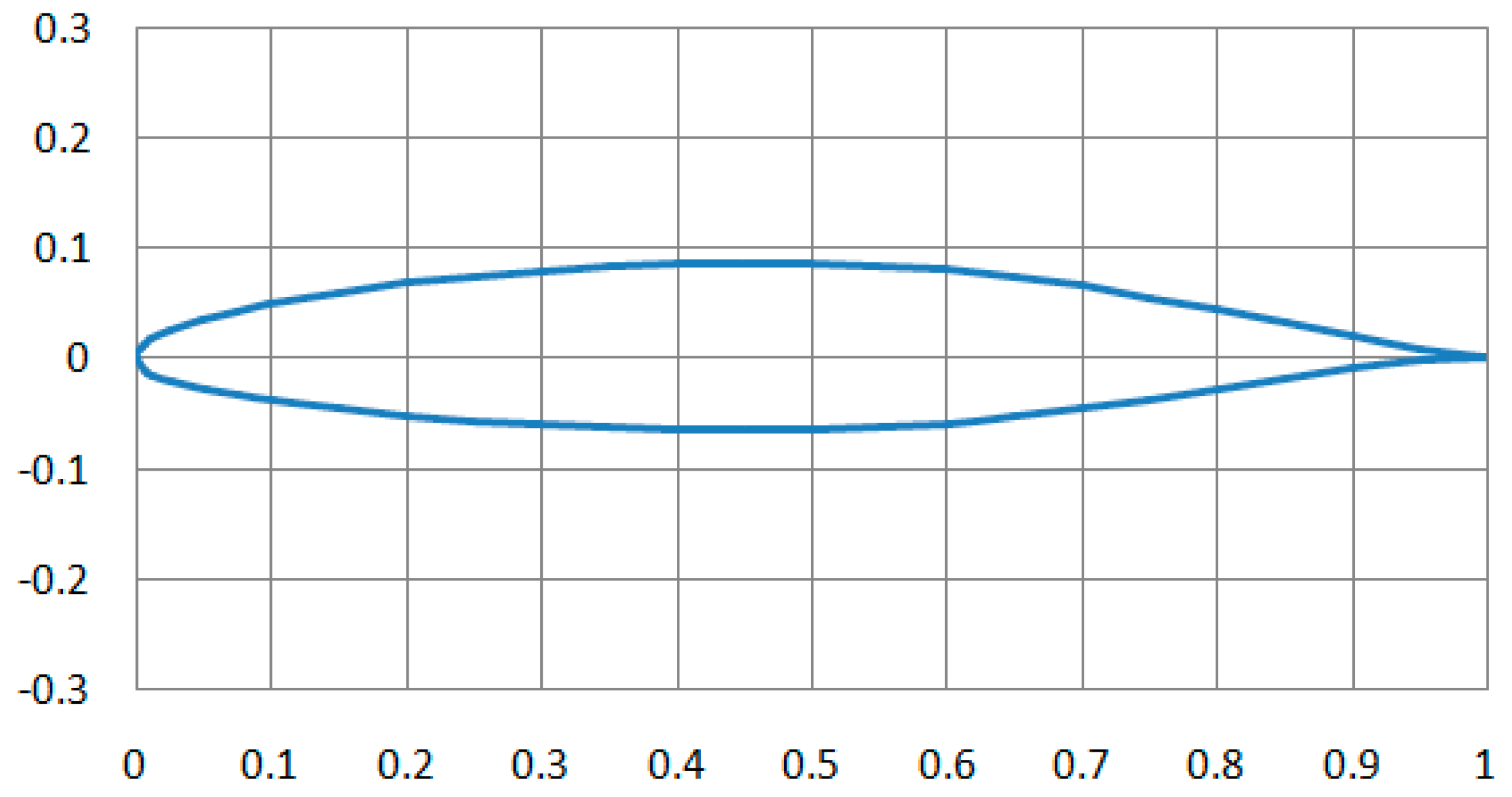

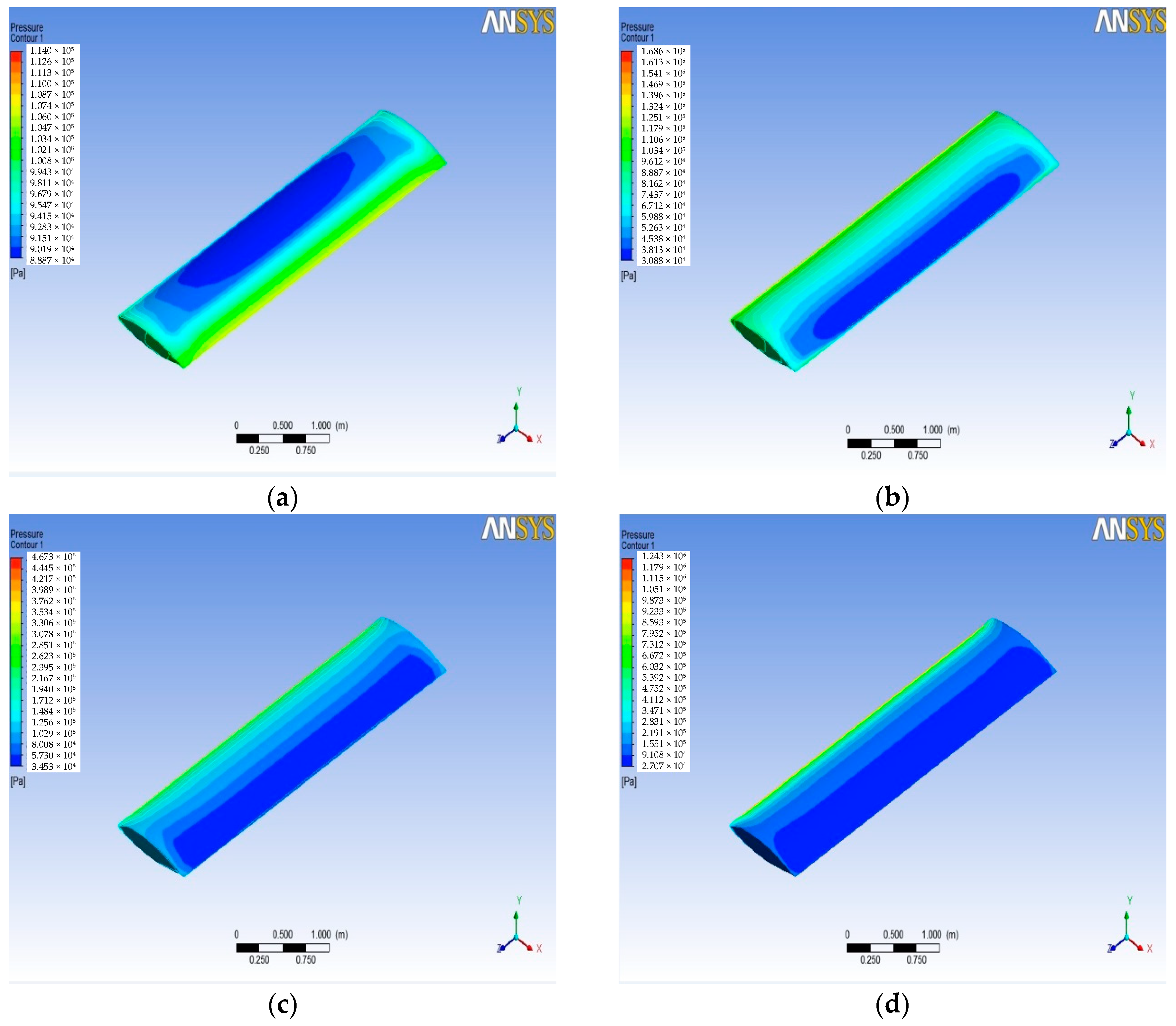




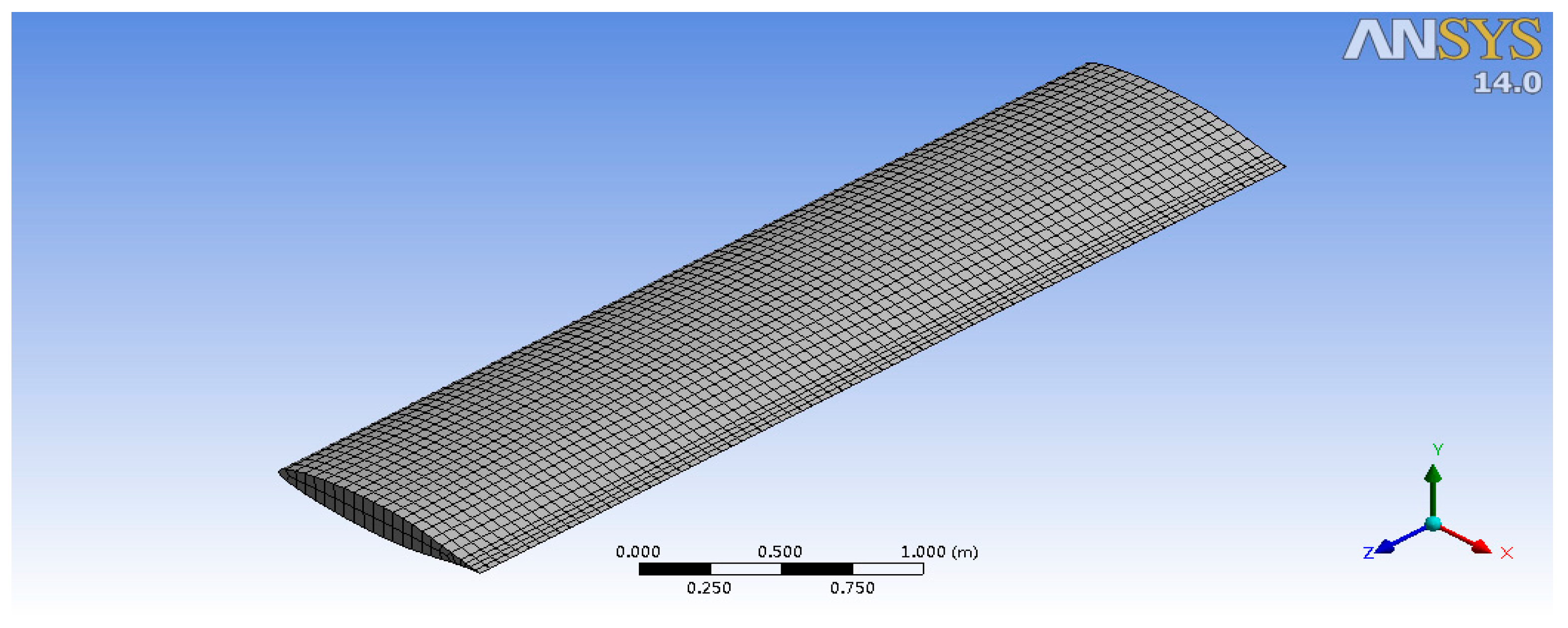
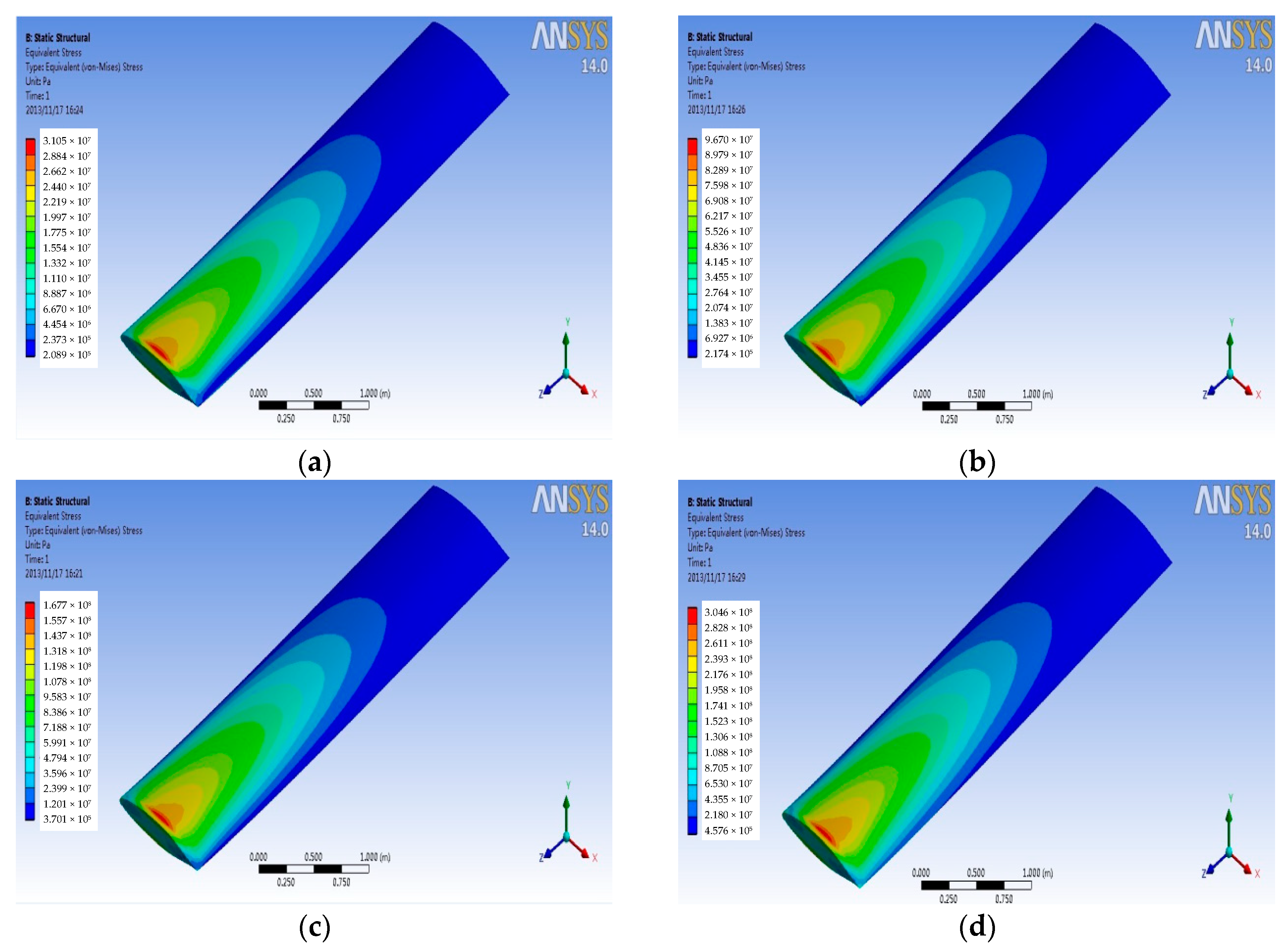

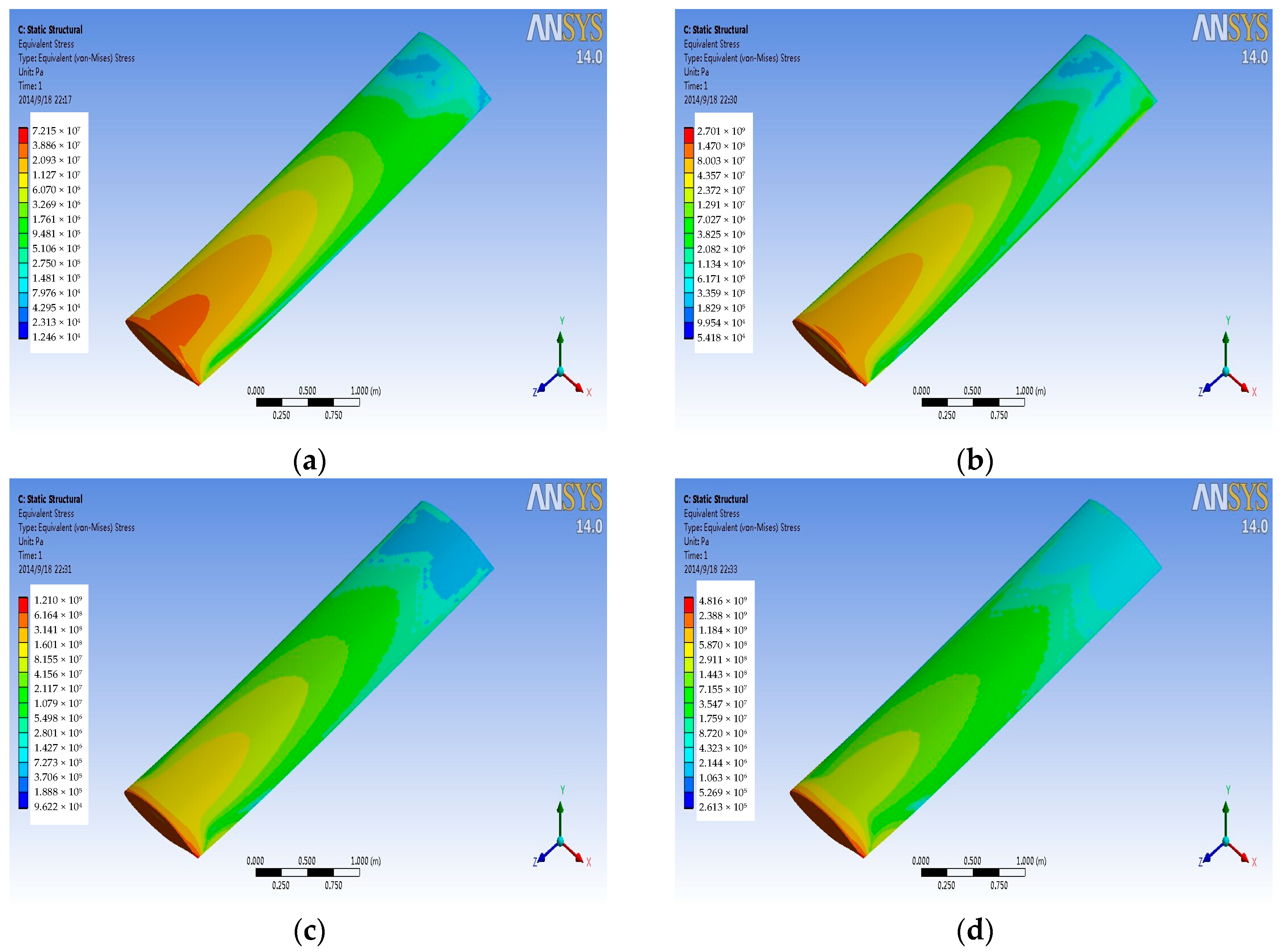
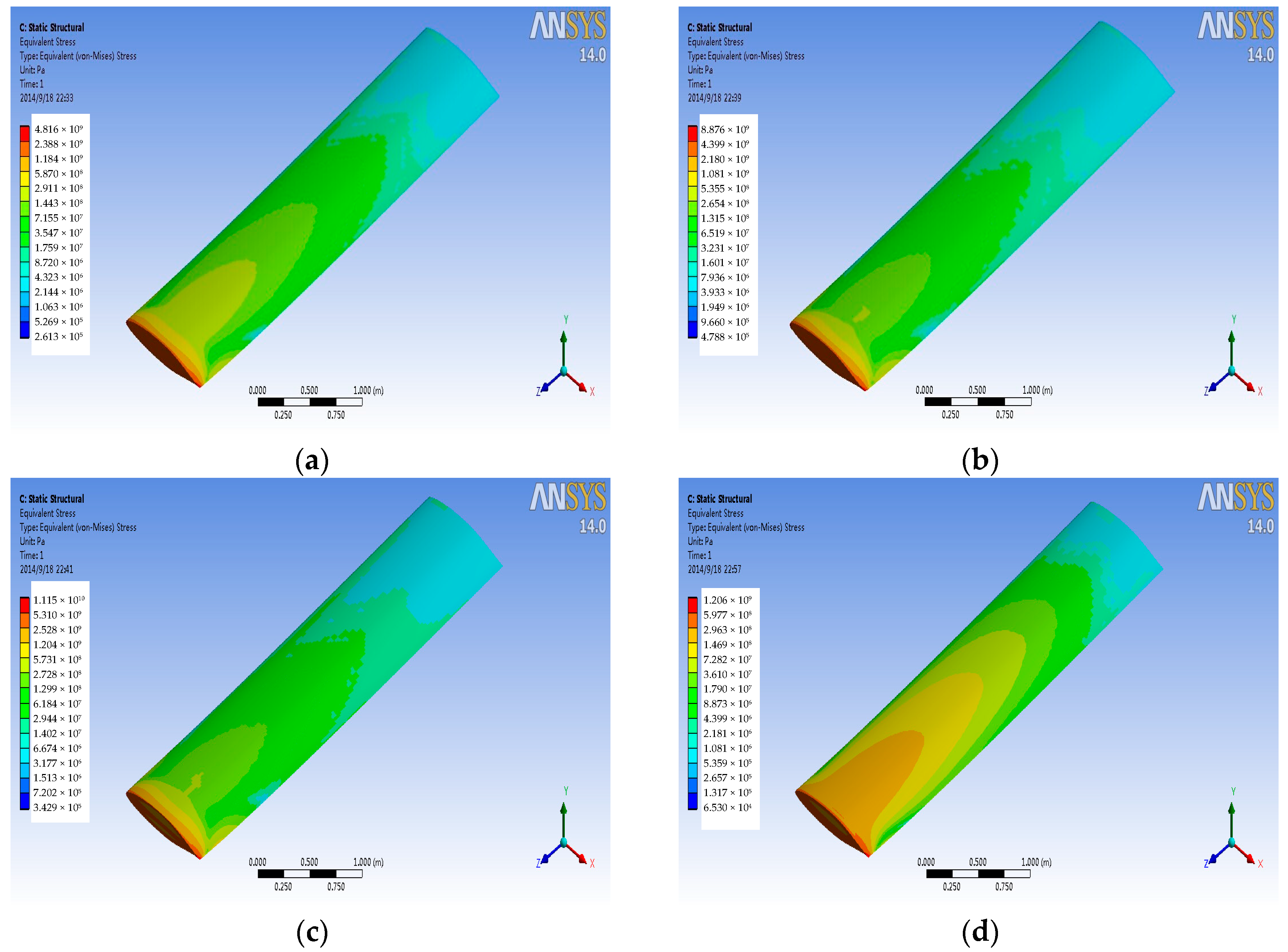


| Name | Titanium Alloy | Aluminum Alloy | Haynes Alloy | Carbon Fiber Composite Material | |
|---|---|---|---|---|---|
| Property | |||||
| Elastic modulus | |||||
| Poisson’s ratio | |||||
| Density | |||||
| Shear modulus | |||||
| Thermal conductivity | |||||
| Thermal Conductivity | |||||
| Modal | Condition 1 | Condition 2 | Condition 3 | Condition 4 | Condition 5 |
|---|---|---|---|---|---|
| 1 | 6.503 | 5.8804 | 5.8848 | 5.8781 | 5.8694 |
| 2 | 38.64 | 34.966 | 34.924 | 34.923 | 34.923 |
| 3 | 40.418 | 36.663 | 36.63 | 36.62 | 36.597 |
| 4 | 63.896 | 56.41 | 56.359 | 56.246 | 56 |
| 5 | 111.81 | 101.69 | 101.28 | 101.27 | 101.23 |
© 2018 by the authors. Licensee MDPI, Basel, Switzerland. This article is an open access article distributed under the terms and conditions of the Creative Commons Attribution (CC BY) license (http://creativecommons.org/licenses/by/4.0/).
Share and Cite
Zhang, L.; Sun, C. Simulation Analysis of Fluid-Structure Interaction of High Velocity Environment Influence on Aircraft Wing Materials under Different Mach Numbers. Sensors 2018, 18, 1248. https://doi.org/10.3390/s18041248
Zhang L, Sun C. Simulation Analysis of Fluid-Structure Interaction of High Velocity Environment Influence on Aircraft Wing Materials under Different Mach Numbers. Sensors. 2018; 18(4):1248. https://doi.org/10.3390/s18041248
Chicago/Turabian StyleZhang, Lijun, and Changyan Sun. 2018. "Simulation Analysis of Fluid-Structure Interaction of High Velocity Environment Influence on Aircraft Wing Materials under Different Mach Numbers" Sensors 18, no. 4: 1248. https://doi.org/10.3390/s18041248
APA StyleZhang, L., & Sun, C. (2018). Simulation Analysis of Fluid-Structure Interaction of High Velocity Environment Influence on Aircraft Wing Materials under Different Mach Numbers. Sensors, 18(4), 1248. https://doi.org/10.3390/s18041248






